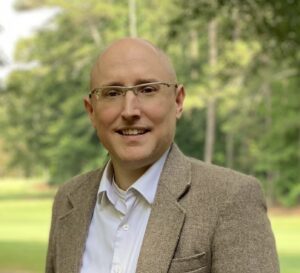Let me begin by disclosing that I am a local manufacturer’s representative for several water treatment companies and my firm specializes in solving disinfection by-product (DBP), total organic carbon (TOC), and taste and odor issues.
We were one of the firms that presented solutions to Fayette County three years ago to help meet recent EPA regulations relating to TOC and DBP’s, and one of these solutions has been designed and funded for implementation.
I have been watching all the articles come out in the paper on this water quality topic and thought I’d share a unique perspective with Fayette County citizens. It turns out I, too, am a Fayette County and Peachtree City resident.
Everyone should know that the county’s Water Board and their consultant, Mallett & Associates, have been working diligently to address our evolving water quality challenges.
I say “evolving” because what started as a TOC percent-removal issue four years ago are now DBP, manganese, and taste and odor issues.
Citizens may not be aware that what started them looking at higher level treatment solutions is an EPA/EPD violation back in 2008 or 2009 for insufficient TOC removal in their treatment process(es).
(It should be noted that any water quality violation notice we get in the mail is standard, boiler-plate verbiage the county gets from the Georgia Environmental Protection Division (EPD). EPD will not allow any utility to modify or influence the reader with misinformation in water quality violation notices.)
TOC is basically natural organic matter, like microscopic leaves, grass, wood, and algae, present in our lakes and streams.
TOC, when contacted with chlorine, can form compounds called disinfection by-products that are regulated.
Last year, the EPA tightened the allowable concentrations of DBPs in the distribution system causing utilities all over the U.S. to explore enhanced treatment solutions.
Clayton County and Cobb County are examples of other local utilities that have been implementing treatment solutions to address these recent EPA requirements.
Many factors contribute to the formation of DBPs, and unfortunately some of the regulated compounds do grow in concentration in a distribution system, like chloroform. There are countless academic studies documenting DBP formation, and the treatment techniques available to address them.
So what is it about our raw water that makes it different than others? Our reservoir waters are not that different than those of our neighboring counties.
What often happens, particularly during drought conditions, is that coagulation (chemical treatment) of reservoir water can become less effective in removing TOC than at other times. If coagulation can’t remove enough TOC, additional treatment is needed.
This is the case at Fayette County. One might find it interesting that our TOC removal violation notices ended pretty much when the drought ended.
Today, our violation notice for DBPs is tied to the distribution system having too high of TOC concentration in the distribution system, not for inadequate TOC percent removal in the treatment plants.
So the county has been working for three years to implement a treatment solution, or solutions, to achieve greater TOC reduction at the water treatment plants, and lower TOC in the effluent water entering the distribution system.
Fortunately the solution(s) they have been working to implement also has a very positive impact in a water treatment plant’s ability to knock out manganese and taste and odor issues, which have recently become of major importance.
The taste and odor and manganese issues being experienced in our water system are also similar to those experienced by our neighbors.
Palmetto and Clayton County are both examples of area [systems] that have had to deal with serious manganese and/or taste and odor issues. Both of these issues can be traced back to high nutrient levels (nitrogen and phosphorus) present in our raw water reservoirs, contributing to algae blooms.
Algae blooms cause taste and odor excursions, and eventually contribute to elevated manganese levels. Peachtree City residents may recall the fish kill in the pond above the docks. This was due to algae respirating the oxygen out of the water.
Depending on a number of factors, nutrients can accumulate in a reservoir over time, and algae blooms can become more regular.
The fact that our water authority had the wisdom to build Lake McIntosh is of great benefit to consumers because we have a “new” lake with negligible nutrient accumulation.
New lakes do have their drawbacks from a treatment standpoint, but overall this is a huge upside for Fayette County.
The good news for all of us is that there are numerous alternatives to solve these water quality challenges and a lot of smart, determined people working to provide the county the very best water quality possible.
Clearly, Tony Parrott, our water system director, Steve Brown and the Board of Commissioners, the Water Board, and the county’s consultants, Mallett and CH2M Hill, are moving us in the right direction.
It would be worthwhile for anyone interested to go through the Fayette County Water Committee Minutes over the past few years. You will see significant discussions and decisions relating to our water quality.
You will also likely find Tony Parrott saying he does not desire to “just get by” in upgrading our water treatment facilities.
Over the next few weeks, the county and their consultants will be making some very important decisions for our water quality future. Let’s encourage them and pray that they have wisdom and discernment in evaluating everything before them.
Fundamentally, it is going to have to be decided whether or not the county wants to save money and try and get by with chemicals, or spend more money to achieve higher quality water.
Chris Keever
Peachtree City, Ga.











Leave a Comment
You must be logged in to post a comment.